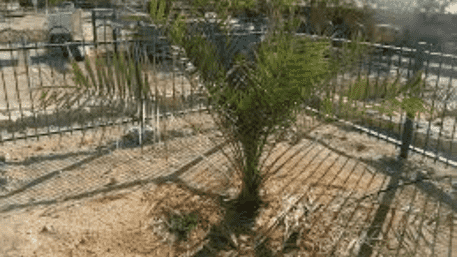
A remarkable discovery has emerged from the Judean Desert, where an ancient seed, believed to date back to between 993 AD and 1202 AD, has grown into a towering 10-foot tree nearly a millennium after its origin. Named “Sheba,” after the biblical queen, the seed was uncovered during an excavation in the late 1980s. Scientists suggest it could belong to a lineage of trees referenced in the Bible, hinting at a rich historical connection to the region now known as Israel, Palestine, and Jordan.
The revival of the Sheba tree has led scientists to speculate about its medicinal properties. They believe it could be the source of “tsori,” a resin mentioned in biblical texts that is associated with healing. The tree is linked to the Commiphora species, known for producing fragrant resins, and it may relate to the Biblical perfume “Balm of Gilead.” While initial hypotheses suggested that Sheba could be a candidate for the historical “Judean Balsam,” researchers have since dismissed this idea due to the tree’s lack of aromatic qualities.
Research into Sheba’s leaves has revealed the presence of active compounds that exhibit anti-inflammatory and anti-cancer properties. Additionally, its stems and leaves have been found to contain antioxidant and skin-smoothing properties. The scientists involved in the study believe that these findings lend credibility to the notion that Sheba may represent an extinct lineage once native to the region, whose resin “tsori” was highly valued for its healing attributes, albeit not necessarily aromatic.
Through a series of DNA, chemical, and radiocarbon analyses, researchers have established that Sheba is part of the family that includes myrrh and frankincense, both of which are mentioned in the Bible and closely associated with the figure of Jesus. However, despite its connections to nearly 200 living plant species, the exact classification of the Sheba tree remains uncertain. Notably, in the 14 years since it was planted, the tree has not flowered or produced any reproductive material for further study.
While scientists remain hopeful about the potential for discovering more ancient species, they acknowledge the challenges that lie ahead. If Judean Balsam exists today as an extant Commiphora species, it is possible that researchers have yet to identify it. The continued study of Sheba may unravel more secrets from the past and open doors to understanding the ancient flora of the region.
This revival not only fascinates scientists but also deepens our connection to historical narratives, bridging the gap between the past and present.















